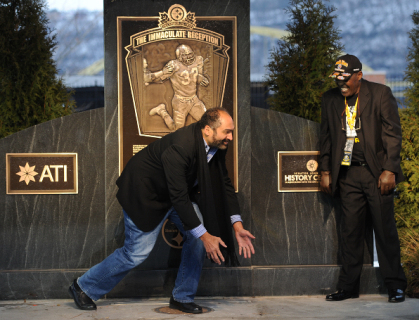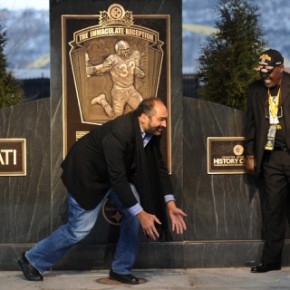
 Major League Baseball finally “got with the ’90’s” this week, as it saw it’s first coach’s (manager’s) challenge, on an 0ut/safe call, in league history. There has long been a debate within the sport over whether or not to slow down an already leisurely paced game by instituting a challenge system similar to what has been used for years in the NFL and other professional sports. Despite the objections of some baseball purists, beginning this season, managers can challenge out/safe, fair/foul, catch/no catch calls.
Major League Baseball finally “got with the ’90’s” this week, as it saw it’s first coach’s (manager’s) challenge, on an 0ut/safe call, in league history. There has long been a debate within the sport over whether or not to slow down an already leisurely paced game by instituting a challenge system similar to what has been used for years in the NFL and other professional sports. Despite the objections of some baseball purists, beginning this season, managers can challenge out/safe, fair/foul, catch/no catch calls.
In March 28th’s New York Times “Gray Matter” column, Brayden King points out that (oddly) the ball/strike call – the call “most subject to human foible” will still be left to the discretion of the umpire. (h/t CB):
In research soon to be published in the journal Management Science, we studied umpires’ strike-zone calls using pitch-location data compiled by the high-speed cameras introduced by Major League Baseball several years ago in an effort to measure, monitor and reward umpires’ accuracy. After analyzing more than 700,000 pitches thrown during the 2008 and 2009 seasons, we found that umpires frequently made errors behind the plate — about 14 percent of non-swinging pitches were called erroneously.
Some of those errors occurred in fairly predictable ways. We found, for example, that umpires tended to favor the home team by expanding the strike zone, calling a strike when the pitch was actually a ball 13.3 percent of the time for home team pitchers versus 12.7 percent of the time for visitors.
These seemingly “influenced” calls are not unique to baseball. As a high school basketball  official, I have found myself calling fewer fouls on the home team, especially when they have a raucous crowd. It’s not a conscious impulse though, I assure you. It’s usually a natural reaction to the environment that we officials find ourselves in. To minimize noise and chaos is to maximize efficiency and control of the game, or so we officials tell ourselves. Who are we kidding? The felt need to be liked is deeply seeded, and it can be made manifest in an instant – with no prior thought.
official, I have found myself calling fewer fouls on the home team, especially when they have a raucous crowd. It’s not a conscious impulse though, I assure you. It’s usually a natural reaction to the environment that we officials find ourselves in. To minimize noise and chaos is to maximize efficiency and control of the game, or so we officials tell ourselves. Who are we kidding? The felt need to be liked is deeply seeded, and it can be made manifest in an instant – with no prior thought.
When the game “hangs in the balance”, King’s data confirms perhaps the opposite of what we would expect:
Other errors were more surprising. Contrary to the expectation (or hope) that umpires would be more accurate in important situations, we found that they were, in fact, more likely to make mistakes when the game was on the line. For example, our analyses suggest that umpires were 13 percent more likely to miss an actual strike in the bottom of the ninth inning of a tie game than in the top of the first inning, on the first pitch.
Not only do we officials want to be liked, but we also get a little tense (and correspondingly less “focused”) when we know that our decision, right here-right now, may well affect the outcome of the game. I can tell you first hand – it stinks to be potentially wrong in those moments where “unequivocally right” is what is expected. As a fallible human being, I am ill equipped (as is any official) to render right and fair judgement in every instance.
In the age of instant replay and views of every angle of every play, certainly we can root out this imperfection, and come to the right call, on every play, every time. King wonders though, if that’s what we (the fans, the consumers, the onlookers) would prefer:
Technologically, Major League Baseball is in a position, thanks to its high-speed camera system, to enforce a completely accurate, uniform strike zone. The question is whether we, as fans, want our games to be fair and just, or whether we are compelled to watch the game because it mimics the real world, warts and all.
We certainly do tend cry foul when our team is affected by a bad call. However, if human error was no longer an issue and every play was called correctly, would we watch? Or at the end of the day, is the felt need to cry out for justice inextricably tied to the very reason we tune in?

COMMENTS
2 responses to ““That’s not a Catch!”: The Fallible Official and the Demand for Justice”
Leave a Reply













We’ve finally figured out that astro-turfed climate-controlled domed stadiums are unpopular because they makes the game too decorous and hygienic, too sterile. Having attended that kind of venue, I felt like I was breaking the rules cheering beyond a golf-clap, and immediately looked for napkins to clean up the craft beer I slopped when tipping the waiter, I mean, vendor. Now we want to take the human element, and the concomitant blame-shifting, out of the sport by using instant replay? Bad idea. At least it is for a Mets fan, like myself. I relish having bad calls to explain my team’s poor performance.
Thanks for the comment RDR.
You’re dead on – we do “relish having bad calls to explain [our] team’s poor performance”.
It’s interesting though that in pro sports, coaches are fined if they publicly question the officials (or call them out) at the press conference after the game. They don’t have the luxury to publicly make excuses for their teams like we fans do.
When asked about a bad a call in a game, most coaches answer with something like “if one or two calls affect that the outcome of the game, that means that we didn’t put ourselves in a position to win”. Coaches often have to bite the bullet and take the high road, even though they’ve got to be steaming inside, more than we are.